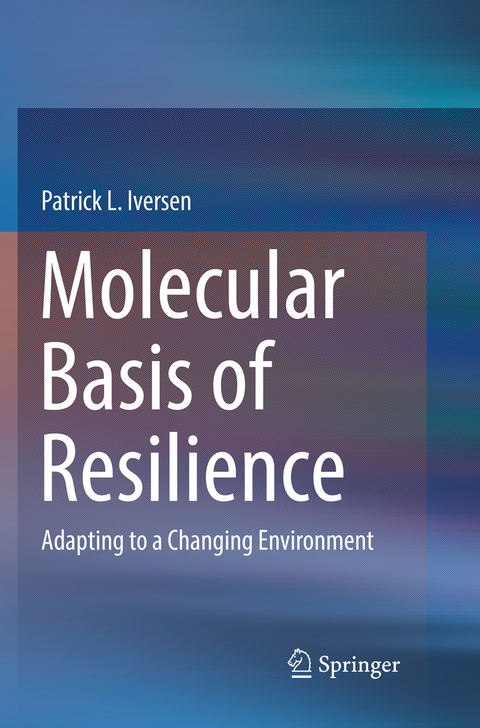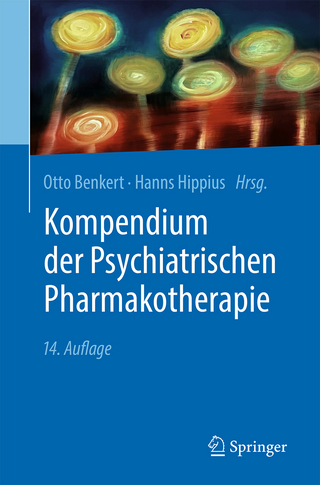
Molecular Basis of Resilience
Springer International Publishing (Verlag)
978-3-030-07460-9 (ISBN)
This book illuminates mechanisms of resilience. Threats and defense systems lead to adaptive changes in gene expression. Environmental conditions may dampen adaptive responses at the level of RNA expression. The first seven chapters elaborate threats to human health. Human populations spontaneously invade niche boundaries exposing us to threats that drive the resilience process. Emerging RNA viruses are a significant threat to human health. Antiviral drugs are reviewed and how viral genomes respond to the environment driving genome sequence plasticity. Limitations in predicting the human outcome are described in "nonlinear anomalies." An example includes medical countermeasures for Ebola and Marburg viruses under the "Animal Rule." Bacterial infections and a review of antibacterial drugs and bacterial resilience mediated by horizontal gene transfer follow. Chapter 6 shifts focus to cancer and discovery of novel therapeutics for leukemia. The spontaneous resolution of AML in children with Down syndrome highlights human resilience. Chapter 7 explores chemicals in the environment. Examples of chemical carcinogenesis illustrate how chemicals disrupt genomes. Historic research ignored RNA damage from chemically induced nucleic acid damage. The emergence of important forms of RNA and their possible role in resilience is proposed.
Chapters 8-10 discuss threat recognition and defense systems responding to improve resilience. Chapter 8 describes the immune response as a threat recognition system and response via diverse RNA expression. Oligonucleotides designed to suppress specific RNA to manipulate the immune response including exon-skipping strategies are described. Threat recognition and response by the cytochrome P450 enzymes parallels immune responses. The author proposes metabolic clearance of small molecules is a companion to the immune system. Chapter 10 highlights RNA diversity expressed from a single gene. Molecular Resilience lists paths to RNA transcriptome plasticity forms the molecular basis for resilience.
Chapter 11 is an account of ExonDys 51, an approved drug for the treatment of Duchenne muscular dystrophy. Chapter 12 addresses the question "what informs molecular mechanisms of resilience?" that drives the limits to adaptation and boundaries for molecular resilience. He speculates that radical oxygen, epigenetic modifications, and ligands to nuclear hormone receptors play critical roles in regulating molecular resilience.
Patrick L. Iversen, Ph.D. is the Scientific Founder and Chief Science Officer of LS Pharma, LLC. Previously, Dr. Iversen was the Senior Vice President of Research and Innovation at AVI BioPharma, Inc., now Sarepta Therapeutics. While at AVI BioPharma, Dr. Iversen initiated the exon skipping programs that led to Eteplirsen (EXONDYS 51(TM)), which recently received FDA approval for the treatment of Duchenne Muscular Dystrophy. In addition, he was responsible for discovery and development of therapeutic drug candidates that treat the Hemorrhagic Fever viruses, Ebola Zaire, and Marburg virus. Dr. Iversen also led the discovery and development of the therapeutic drug candidates for Influenza A, Hepatitis C virus, and West Nile virus. In each case, developments led to successful IND applications to the FDA and subsequent phase 1 clinical trials. He served as a Professor at Oregon State University in the Department of Environmental & Molecular Toxicology conducting research investigating the role of RNA structures in the regulation of gene expression. He has published extensively on his research in peer-reviewed journals, and has written notable book chapters, editorials, and others publications. He has presented his work on numerous occasions at national and international meetings, and served office in professional societies. As Professor of Pharmacology at the University of Nebraska Medical Center Dr. Iversen served on numerous university committees, taught medical and pharmacy studies, and participated in student thesis committees. Dr. Iversen studied at the Eppley Institute for Research in Cancer and Allied Diseases as a Postdoctoral Research Fellow.
Prologue.- Preface.- Social Entropy.- Virus among Us.- Non-linear Anomalies.- Bacterial Infectious Disease.- Cure 2000.- Chemicals in the Environment.- Immune Defense.- Metabolic Defense.- Analog Genetics.- Eteplirsen.- Regulating Resilience.
| Erscheint lt. Verlag | 5.1.2019 |
|---|---|
| Zusatzinfo | XIX, 312 p. 11 illus., 9 illus. in color. |
| Verlagsort | Cham |
| Sprache | englisch |
| Maße | 155 x 235 mm |
| Gewicht | 686 g |
| Themenwelt | Medizin / Pharmazie ► Medizinische Fachgebiete ► Pharmakologie / Pharmakotherapie |
| Medizin / Pharmazie ► Pharmazie | |
| Naturwissenschaften ► Biologie ► Genetik / Molekularbiologie | |
| Schlagworte | Alternate exon use • Cytochrome P450 • Duchenne Muscular dystrophy • Ebola virus • Emerging infectious disease • horizontal gene transfer • innate immune responses • Non-coding RNA • Oligonucleotide induced exon skipping • RNA |
| ISBN-10 | 3-030-07460-9 / 3030074609 |
| ISBN-13 | 978-3-030-07460-9 / 9783030074609 |
| Zustand | Neuware |
| Informationen gemäß Produktsicherheitsverordnung (GPSR) | |
| Haben Sie eine Frage zum Produkt? |
aus dem Bereich


